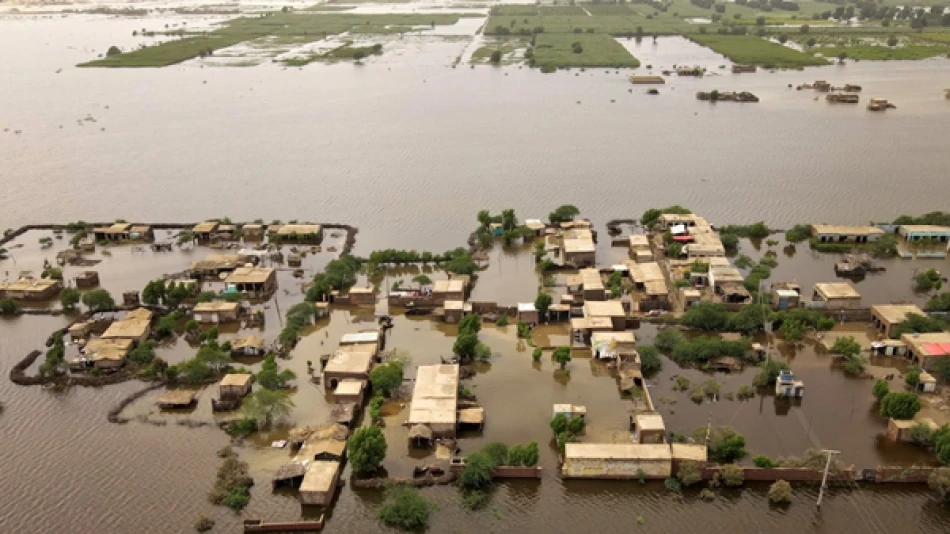
Pakistan Reopens Roads in Flood-Ravaged Regions, Restoring Vital Connectivity
Pakistan's Infrastructure Slowly Recovers as Deadly Floods Expose Climate Vulnerability Crisis
Pakistani authorities have restored 70% of electricity and reopened key transportation routes in the country's northern regions following catastrophic flash floods that killed over 300 people last week. The disaster highlights Pakistan's growing vulnerability to extreme weather events, raising urgent questions about the nation's infrastructure resilience and climate adaptation strategies in one of the world's most climate-vulnerable countries.
Recovery Efforts Gain Momentum Amid Massive Displacement
Information Minister Ataullah Tarar announced Tuesday that engineers are working around the clock to fully restore the electrical grid that collapsed during last week's flooding. The restoration of most roadways has enabled the delivery of food supplies and essential materials to flood-affected areas, providing critical relief to communities cut off since the disaster began.
Prime Minister Shehbaz Sharif has ordered authorities to accelerate recovery efforts in the Buner district of Khyber Pakhtunkhwa province, where a phenomenon known as a "cloud burst" – sudden, intense rainfall – killed at least 280 people on Friday alone. More than 25,000 people have been evacuated from affected areas.
Pakistan's Climate Crisis Deepens
This latest disaster adds to Pakistan's mounting climate toll. The National Disaster Management Authority reports that seasonal monsoon rains have killed over 700 people nationwide since June 26, making this one of the deadliest monsoon seasons in recent years.
Historical Context of Pakistan's Flood Vulnerability
Pakistan ranks among the top 10 countries most vulnerable to climate change, according to the Global Climate Risk Index. The country experienced devastating floods in 2010 that affected 20 million people and again in 2022 when unprecedented flooding submerged one-third of the country, affecting 33 million people and causing $30 billion in damages.
These recurring disasters reflect a troubling pattern: Pakistan contributes less than 1% of global greenhouse gas emissions yet bears disproportionate consequences of climate change, including increasingly erratic monsoon patterns, glacial melt in the north, and extreme weather events.
Economic and Development Implications
The infrastructure damage from these floods will likely strain Pakistan's already fragile economy, which is currently under an International Monetary Fund bailout program. The country's debt-to-GDP ratio exceeds 90%, limiting fiscal space for disaster recovery and climate adaptation investments.
Regional Comparison and Global Lessons
Unlike wealthier nations such as the Netherlands or Singapore, which have invested heavily in flood management systems, Pakistan's infrastructure remains inadequate for increasingly severe weather patterns. The country's situation mirrors challenges faced by other developing nations in South Asia, where rapid urbanization and climate change create a dangerous combination.
Bangladesh has made significant strides in early warning systems and cyclone shelters, while India has invested in improved meteorological forecasting. Pakistan's experience underscores the urgent need for similar systematic approaches to disaster preparedness rather than reactive responses.
Looking Forward: The Adaptation Imperative
The current crisis reinforces the critical importance of climate finance and adaptation funding for vulnerable nations. Pakistan's repeated flood disasters demonstrate that without substantial investment in resilient infrastructure, early warning systems, and comprehensive disaster preparedness, the human and economic costs will continue to escalate with each extreme weather event.
The international community's response to Pakistan's climate challenges will serve as a test case for global climate justice efforts, particularly as discussions continue around loss and damage funding for climate-vulnerable nations at upcoming international climate negotiations.
Most Viewed News

 Layla Al Mansoori
Layla Al Mansoori






